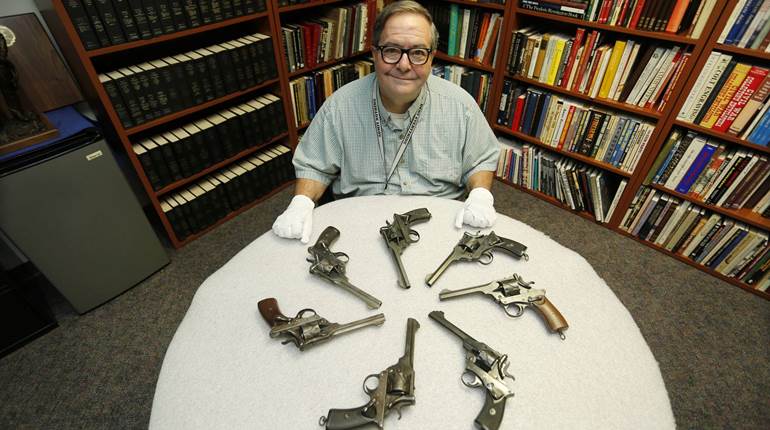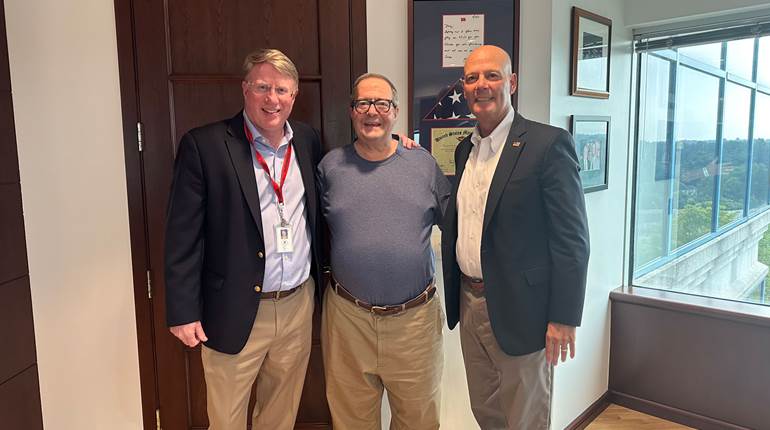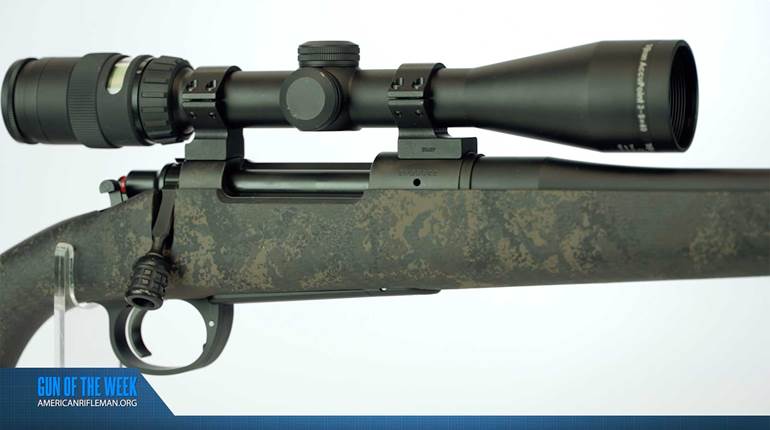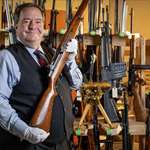After the events at Lexington and Concord, the British column that had emerged from Boston still had to travel back to the city. By the late morning on April 19, the alarm had been raised across the countryside, and thousands of militiamen converged on the retreating British, harassing them at every step of the way. Thanks to archaeological evidence and exhaustive research, we now have a clear view of what sorts of arms were being used by the militiamen and the British regulars in the running gunfight that gave "Battle Road" its name. Watch our "American Rifleman Television" feature segment above to see the details of these longarms.
"So one of the things that most people think when you watch documentaries and read books, they talk about that the British army and the militia and minutemen, basically all of the provincials are armed the same, and that's not necessarily the case," arms historian Joel Bohy said. "On April 19th, and we've found this archaeologically through a lot of projects we've worked on, as well as the arms that survive, the majority of guns that are being carried by militia and minute companies are fowling pieces, these long-barreled hunting guns. There are some others that are a little shorter barrel, different variations, but for the most part, there's a lot of fowling pieces."

New England fowlers were typified by their extraordinarily long barrels, some of which measured up to 55" in length. Buttstocks often were carved in a French style, resembling some of the French fusils that would have been common in North America up until the end of the French & Indian War that have a graceful, curving drop to the buttstock. Notably, fowling pieces were smoothbore guns, much like the military muskets of the time, and were often fired with shot or a single, round projectile that was considerably smaller than the bore for easy loading.
"Loading muskets, both British, American and French, were done pretty much the same way," American Rifleman Field Editor Garry James said. "The soldier would withdraw the paper cartridge from his cartridge box. Bite off the rear end of the cartridge, raise the musket up, prime, close the steel, return the musket, pour the powder down the barrel, and then push the cartridge paper and the ball down the barrel. This did two things. It kept the ball from rolling out of the barrel, and number two, and it also, it gave, you know, a little more stability to the ball when it was leaving. Conceivably, it might give it a little more accuracy."

Unlike the military muskets of the time period, all of which had reasonably standard bore sizes, civilian fowling pieces varied considerably in bore size. While many guns were of a similar build, some were larger, reflecting the .75- or even .80-cal. bores found on many contemporary military muskets, while others were even smaller.
"So the majority of the fowling pieces are gonna be a smaller bore. .62, maybe .64. There are a few that are larger than that, and some smaller, there's some that are recorded as around .50," Bohy said. "So you're gonna have a variety of ammunition that's gonna be fired out of these guns. And later on in the war, that's this becomes a problem because you have to supply so much different ammunition for so many different guns to be able to have these guys armed and equipped and ready to fight."

Surviving arms from the 1770s are rare, particularly arms that have a direct connection to the events of April 19, 1775. However, the flintlock fowling piece carried by Captain John Parker, the commander of the Lexington militia that met the advance guard of the British infantry early that morning on the village green, survives today.
"Captain John Parker's fowling piece is in the collection of the Commonwealth of Massachusetts. It's in the State House, and it was donated by Theodore Parker, Captain Parker's grandson. Upon his passing, it was in his will that the state get that gun, as well as another one," Bohy said. "So the bore on Captain Parker's gun is about a .62 caliber. And during the Parker's Revenge archaeology project, which we did, we found musket shot fired by Captain Parker's company and fowling piece shot. And there were some in there that, there was a whole row of them, actually, that would've fit into that gun."
To watch complete segments of past episodes of American Rifleman TV, go to americanrifleman.org/videos/artv/. For all-new episodes of ARTV, tune in Wednesday nights to Outdoor Channel 8:30 p.m. and 11:30 p.m. EST.





![Winchester Comm[94]](/media/1mleusmd/winchester-comm-94.jpg?anchor=center&mode=crop&width=770&height=430&rnd=134090756537800000&quality=60)
![Winchester Comm[94]](/media/1mleusmd/winchester-comm-94.jpg?anchor=center&mode=crop&width=150&height=150&rnd=134090756537800000&quality=60)

















